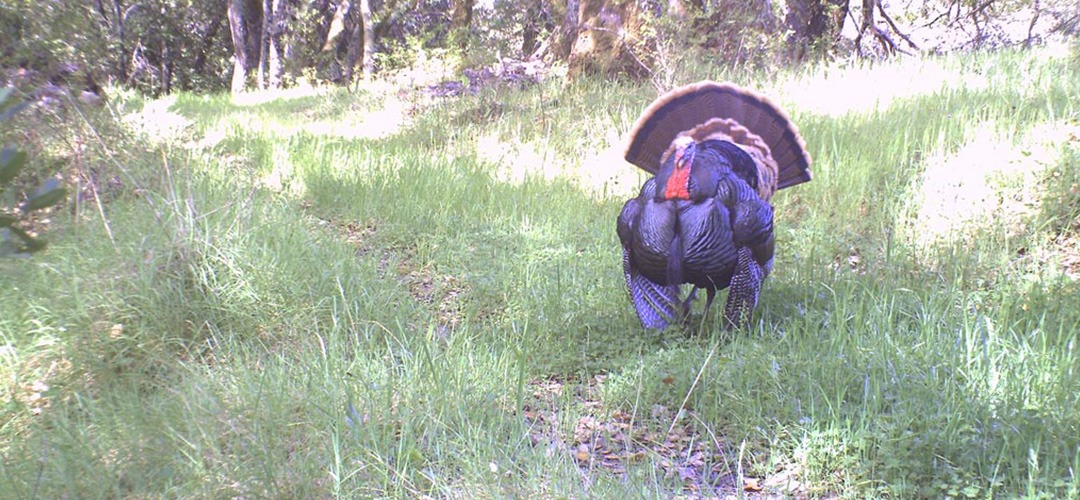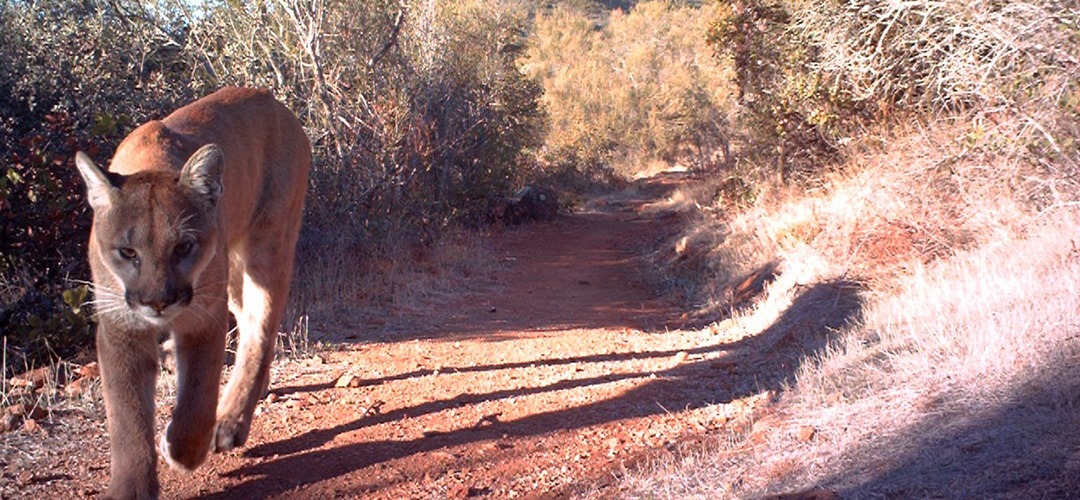SONOMA VALLEY WILDLIFE CORRIDOR
One Adventurous Bear
One night in 2009, a black bear was spotted near a creek on the east side of Petaluma. Chased by a helicopter, the bear followed that creek back up and over Sonoma Mountain to return to Napa County from where he or she had probably started. It is likely this adventurous ursine had been using the Sonoma Valley Wildlife Corridor to travel from Napa County through the Sonoma Valley and over the mountain to Petaluma.
The bear didn’t just drop into Petaluma — this large carnivore had been able to travel a long distance, safely and mostly unseen, through existing land and creek corridors. Such corridors are essential for wildlife passage — and not just for the bigger mammals, like bear and mountain lion, but for the many smaller animals as well, like raccoon, fox and bobcat

A Multi-Year Project
In 2012, with funding from the Gordon and Betty Moore Foundation, Sonoma Land Trust embarked on a multi-year project to keep open the narrowest section — the “pinchpoint” — of the high-priority Sonoma Valley Wildlife Corridor, which is at serious risk of closing up. Since that time, the Land Trust has:
- purchased three key properties in the corridor;
- assessed permeability (freedom of animal movement) of the land corridor within several strategic properties;
- completed a Corridor Management and Monitoring Strategy;
- met with neighboring landowners to share how they can help wildlife thrive in the corridor;
- co-led the Transform SDC coalition to save 800 acres of wild land that are part of the now-closed Sonoma Developmental Center; and
- completed a two-year remote camera study of wildlife use of the corridor.
Today, the corridor remains at risk, but there is immense reason for hope. In 2017, building on its success in the Sonoma Valley and with additional funding from the Moore Foundation, Sonoma Land Trust:
- expanded its corridor work to the Marin and Napa County borders, as described in this Press Democrat article;
- partnered with the Wildlife Conservation Society to develop guidelines for recreation within the corridor so that animals can continue to roam free; and
- helped fund All Hands Ecology’s successful mountain lion telemetry study.
More recently, an analysis of the Sonoma Developmental Center (SDC) for maintaining wildlife connectivity and climate change adaptation by Gray and Merenlender (2015) found that much of the northern portion of SDC has high estimates for landscape permeability and is expected to allow for free passage of wildlife if left undisturbed. The Center is also a critical link in the landscape that provides high climate diversity and slower rates of climatic change than similarly sized linkages throughout the North Bay. Read the SDC Connectivity Report here.
Sonoma Land Trust also partnered with Sonoma Water to clear a Highway 12 underpass to improve safe passage for wildlife crossing the valley, and worked with four landowners to modify fences that then provided greater passage for wildlife. Subsequent monitoring showed increased wildlife use of these improved structures.
Additional Resources
Bay Nature: Watching Wildlife Move Through Sonoma Valley
Sonoma Index-Tribune: Sonoma Land Trust gets $2.1 million for wildlife study project
Conserving the Sonoma Valley Wildlife Corridor by the Moore Foundation
“The Highway of Hope” story from NBC’s OpenRoad TV with Doug McConnell
Keeping the Sonoma Valley Wildlife Corridor open and Wildlife Friendly
Results of the Wildlife Corridor underpass report
Press Democrat: Preserving a path for wildlife









